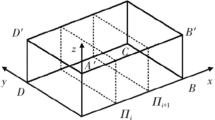Abstract
Traffic monitoring methods have remarkably high costs. Hence, using intelligent vehicles can reduce the costs related to infrastructures such as equipment application costs, system operation and its maintenance. Inter-vehicular communication provides the opportunity in the cloud environment for enhancing communication area. In this paper, distribution of a large volume of information by roadside units to the vehicular network is inspected based on effective vehicle-to-vehicle communication in cloud environment. Given the nature of vehicular networks, the topology of these networks changes rapidly. Therefore, a distributed pattern with simple protocols is taken into consideration, rather than focusing on centralized structures. By applying no-rate coding in roadside units and the utilization of vehicles as information carriers, an effective method is presented for distributing information to all nodes (even to nodes belonging to separate clusters) within the network. Furthermore, fuzzy logic, as a precise system for imprecise and approximate conditions in vehicular networks, and reinforcement learning, as an appropriate algorithm for dynamic environments, for managing the movement of vehicles are used. As a result, network efficiency is enhanced and data transmission delay in the network is reduced.















Similar content being viewed by others
Notes
References
Luo, J., & Hubaux, J. P. (2004). A survey of inter-vehicle communication (No. LCA-REPORT-2000-009).
Yin, J., ElBatt, T., Yeung, G., Ryu, B., Habermas, S., Krishnan, H., & Talty, T. (2004, October). Performance evaluation of safety applications over DSRC vehicular ad hoc networks. In Proceedings of the 1st ACM international workshop on Vehicular ad hoc networks (pp. 1–9). ACM.
Rahbari, D. (2014). Help the genetic algorithm to minimize the urban traffic on intersections. International Journal of Research in Computer Science,4(4), 9.
Ng, K. M., Reaz, M. B. I., & Ali, M. A. M. (2013). A review on the applications of Petri nets in modeling, analysis, and control of urban traffic. IEEE Transactions on Intelligent Transportation Systems,14(2), 858–870.
Sinhmar, P. (2012). Intelligent traffic light and density control using IR sensors and microcontroller. International Journal of Advanced Technology & Engineering Research (IJATER),2(2), 30–35.
dos Santos Soares, M., & Vrancken, J. (2012). A modular Petri net to modeling and scenario analysis of a network of road traffic signals. Control Engineering Practice,20(11), 1183–1194.
Basile, F., Chiacchio, P., & Teta, D. (2012). A hybrid model for real time simulation of urban traffic. Control Engineering Practice,20(2), 123–137.
Bazzi, A., & Zanella, A. (2016). Position based routing in crowd sensing vehicular networks. Ad Hoc Networks,36, 409–424.
Płaczek, B. (2014). A self-organizing system for urban traffic control based on predictive interval microscopic model. Engineering Applications of Artificial Intelligence,34, 75–84.
Author information
Authors and Affiliations
Corresponding author
Additional information
Publisher's Note
Springer Nature remains neutral with regard to jurisdictional claims in published maps and institutional affiliations.
Rights and permissions
About this article
Cite this article
Eskandari, S., Taghavi Afshord, S. Managing the Movement of Virtual Vehicles in Cloud Environment Using Reinforcement Learning Algorithm and Fuzzy Logic. Wireless Pers Commun 113, 1871–1890 (2020). https://doi.org/10.1007/s11277-020-07297-z
Published:
Issue Date:
DOI: https://doi.org/10.1007/s11277-020-07297-z




